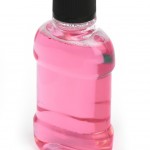
Patients undergoing fixed appliance orthodontic treatment are more prone to gingivitis, periodontitis and white spot lesions, consequently good oral hygiene is essential. Chlorhexidine is a commonly used chemotherapeutic agent used as a short-term adjunct to periodontal treatment and for the reduction of bacteria associated with caries and periodontal disease.
The aim of this review was to assess the efficacy of chlorhexidine products (mouthwashes, toothpastes, gels, tooth varnishes) in maintaining gingival health among orthodontic patients with fixed appliances.
Methods
The review protocol was registered on PROSPERO. Searches were conducted in the Medline/PubMed, Embase, CENTRAL, Web of Knowledge and Scopus databases. Randomised controlled trials (RCTs) of adjunctive use of chlorhexidine products in patients undergoing fixed appliance orthodontic treatment were considered. Two reviewers independently selected studies extracted data and assessed risk of bias using the Cochrane tool (RoB2). The primary outcome was gingival index (GI) With plaque index (PI), bleeding index (BI), and pocket probing (depth PPD) as secondary outcomes. Random-effects meta-analyses of mean differences (MDs) or standardised mean differences (SMDs) with their 95% confidence intervals (CIs) were undertaken. The overall certainty of evidence was rated using the Grades of Recommendations, Assessment, Development and Evaluation (GRADE) approach.
Results
- 20 RCTs (18 parallel, 2 split mouth) involving a total of 1001 patients were included.
- 19 of the 20 studies were conducted in university clinics in 9 different countries, Brazil, Germany, Iran, Iraq, India, Morocco, Norway, Turkey and the USA.
- 16 RCTs were considered to be at high risk of bias, 3 had some concerns with one have low risk.
- 11 studies involved CHX-containing mouthwashes, 4 studies varnishes, 3 studies gels and 2 toothpastes.
- Clinically relevant benefits were seen for chlorhexidine (CHX) mouthwashes at 0-1 months or 1–3 months but not at 3-6 months.
- At 1-3 months meta-analysis showed that CHX-containing mouthwash was associated with
- lower GI, MD = -0.68 (95%CI; -0.97 to -0.38) [9 studies].
- lower PI, MD = -0.65 (95%CI; -0.86 to -0.43) [9 studies].
- lower BI, SMD = -1.61(95%CI; -2.99 to -0.22) [2 studies].
- lower PPD, MD = -0.60 mm (95%CI; -1.06 to -0.14 mm) [2 studies].
- Meta-analyses (2 RCTs) did not find that the adjunctive use of CHX gel had significant benefits in terms of GI, PI or PPD
- Meta-analyses (2 RCTs) did not find any benefits for GI or PI with CHX containing varnishes.
- GRADE certainty of evidence was rated as high for PI and GI outcomes with CHX mouthwash at 1-3 months all other outcomes were rated as of low certainty.
Conclusions
The authors concluded: –
Adjunct use of CHX mouthwash during fixed-appliance treatment is associated with improved gingival inflammation, plaque control, and pocket depths, but caution is warranted and recommendations about CHX use during orthodontic treatment of children/adults should consider the heterogeneous patient response, cost-effectiveness, and potential adverse effects.
Comments
The authors registered a protocol for their review and undertook and searched 5 major databases. 20 studies were included although 2 of these were split-mouth and there are concerns about their inclusion because of wash-over effects. The studies are analysed at three time-periods, 0-1 months, 1-3 months and 3-6 months with beneficial effects being seen at the two shorter time periods, although only 2 studies provided data for 3-6 months. The review demonstrated a beneficial effect on gingival health and while a range of CHX products were tested the clearest outcomes were reported for CHX mouthwash at 1-3 months. A 2017 Cochrane review (Dental Elf – 3rd April 2017) provided high quality evidence that CHX mouthwashes reduce plaque although orthodontic patients were excluded. The review did not present any data on adverse effects from CHX use although these are well-know. Although noted in the discussion these adverse effects are likely to impact on patient’s routine use during orthodontic treatment and would need to be part of a benefits/risk conversation with patients.
Links
Primary Paper
Hussain U, Alam S, Rehman K, Antonoglou GN, Papageorgiou SN. Effects of chlorhexidine use on periodontal health during fixed appliance orthodontic treatment: a systematic review and meta-analysis. Eur J Orthod. 2023 Feb 10;45(1):103-114. doi: 10.1093/ejo/cjac044. PMID: 36001494.
Other references
Dental Elf – 17th Apr 2023
Mouthwashes, microorganisms and gingivitis in orthodontic patients
Dental Elf – 3rd Apr 2017
